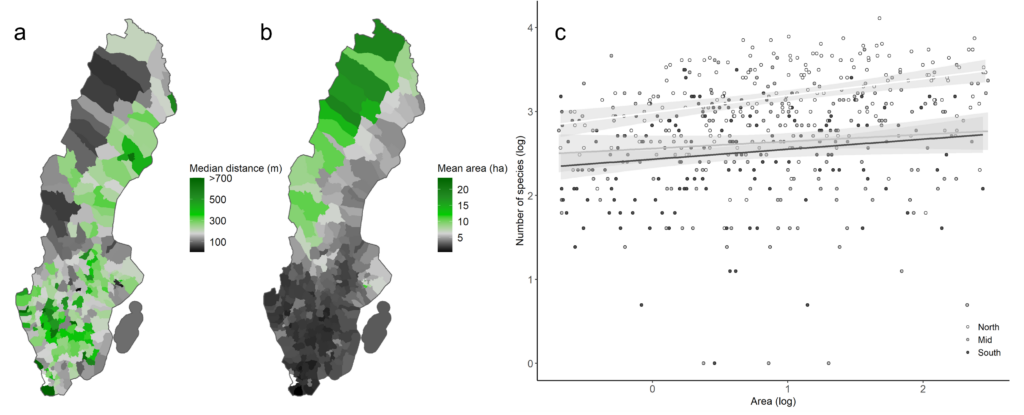I show that key habitats in northern Sweden tend to have more species (mean = 28) compared to middle (mean = 17) and southern Sweden (mean = 14), contrary to what we expect given hat number of species often decrease towards the poles.
Key habitats in the north are larger and have the nearest neighbour closer than southwards (Fig. 1a-b), this might explain the higher species content. However, key habitats of a certain size in northern Sweden tend to harbour more species than key habitats of the same size in southern and middle Sweden (Fig. 1c). That key habitats in the north harbours more species might be due to later introduction of intensive forest management. A study from Finland found more polypore species in eastern, that have a shorter history of intensive forest management than the western part.

I found that species respond very differently to stand and landscape factors. Number of large old trees was the stand variable that most species respond positively to, especially lichens and red-listed species. Additionally, a majority of the species that responded positively to number of large old trees also responded positively to a PCA-axis of landscape variables where most variation was explained by the amount of old forest within 5 km from the key habitat.